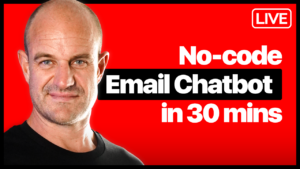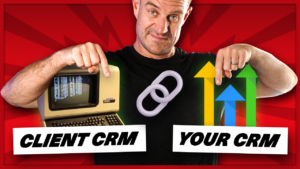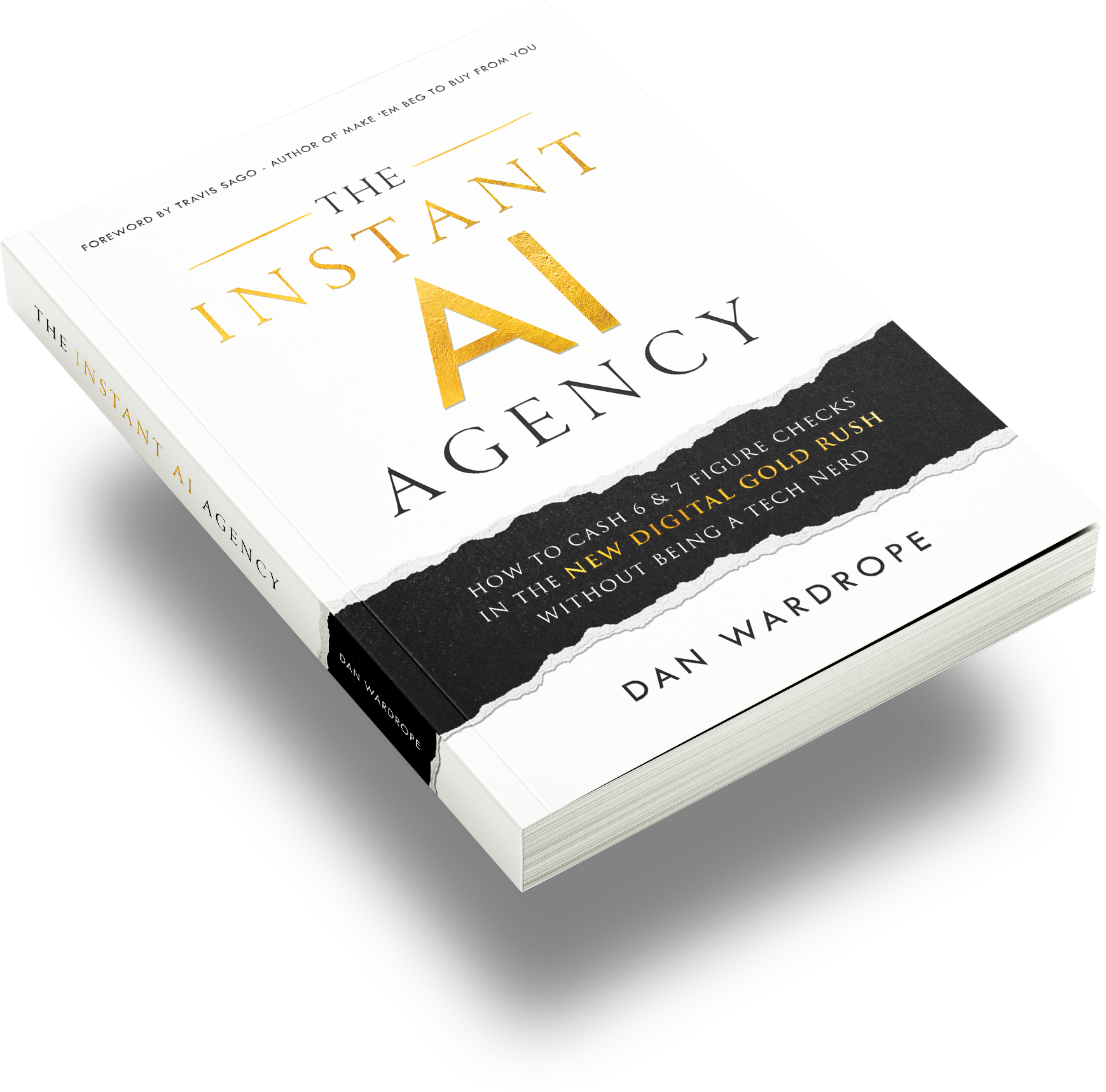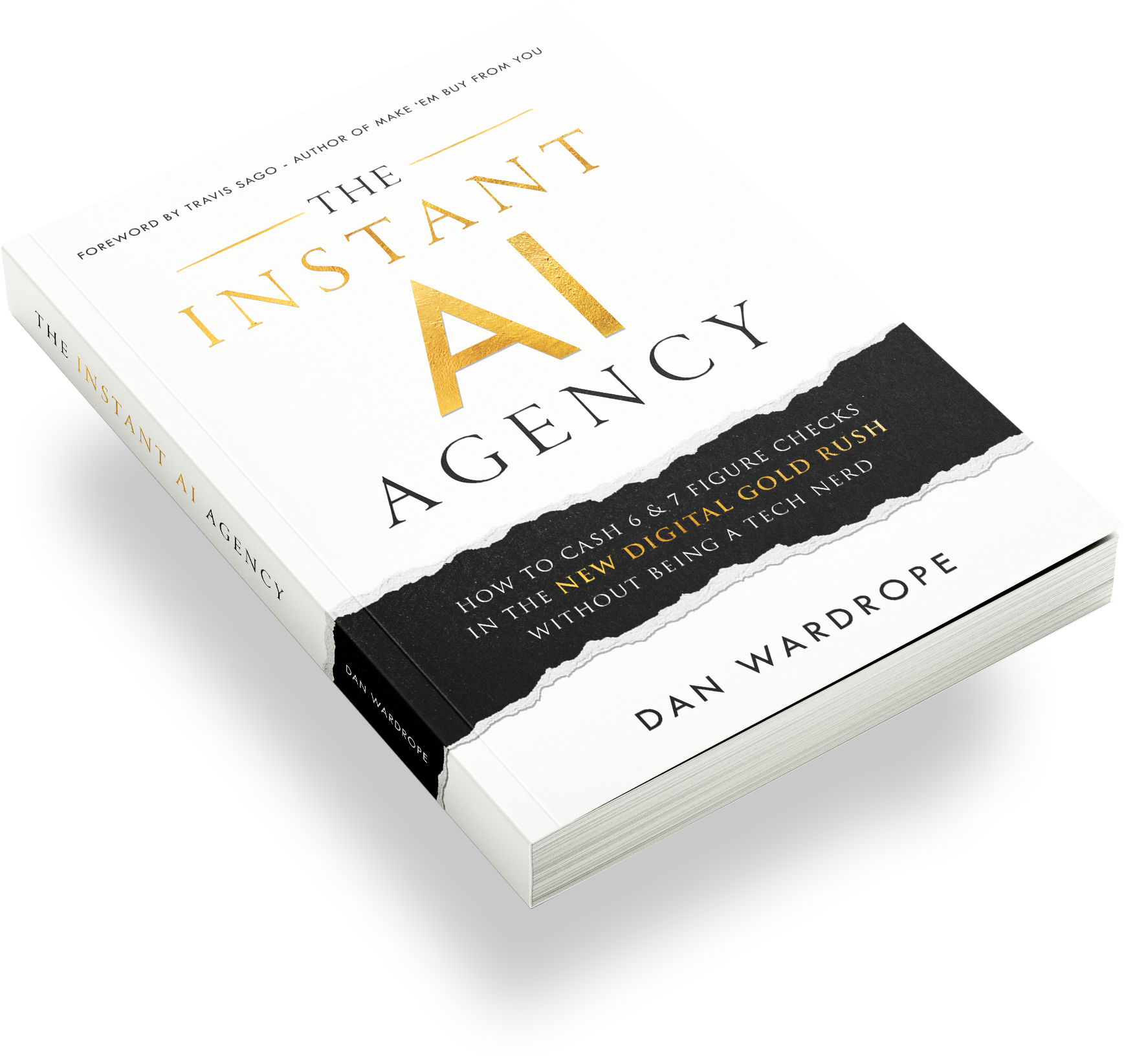>>
Link to Unbounce as mentioned in this video. You can use this link to get a 14 day free trial + 20% off the first 3 paid months (on any pricing package)
https://unbounce.grsm.io/DanWardrope
>>
When you’re deep into running your Pay Per Lead agency, you’ll notice you’re hitting certain milestones.
Finding the perfect niche or sub-niche with a nationally-appealing offer is Number One.
Landing your first big client is Number Two.
And so on, and so forth.
Eventually, you’ll find yourself wondering if you should hire your first employee.
If you’re thinking about that now, then congratulations!
It’s one of the first concrete steps to expanding and scaling your business.
However, some people tend to hire too fast, for the wrong reasons, or even for the wrong position.
Not to worry, I’m here to give you some of my top hiring tips.
But first, I’ll tell you what sort of position you should be in before you hire your first employee.
1-2-1 Client Lead Delivery and Personal Brands
So, a Pay Per Lead generation agency can work in two ways:
1. Your delivering leads 1-2-1 to one client or more. This could be in one niche or a couple, depending on your experience.
2. You’ve set up a lead generation website, and have built a brand of your own. This website concentrates on one niche. You segment your leads according to type, and you supply them to multiple clients depending on their preferences.
My agency, Flexx Digital, does a mixture of both.
What Is 1-2-1 Client Lead Delivery?
This is Newbie Nigel.

Newbie Nigel has 1-2 years experience in the Pay Per Lead industry.
He started off the same way as everybody else: selling leads on retainer contracts to multiple clients.
He soon found himself in the same trap as thousands before him: juggling 15 niches at once, his lil’ hamster feet peddling furiously just to keep things moving.
Then he discovered Pay Per Lead.
With this model, Nigel learned to stick to one niche and hone his offer.
He reached out to some clients with a nationally appealing product or service (‘cus it’s 150x easier to generate leads for national-level clients!).
Nigel soon learned that Pay Per Lead clients would much prefer 100 high-quality leads over 1000 of mixed quality, so he honed his sales funnels to match client demand.
See, his old Ad > Landing Page > Thank You Page funnels worked just fine… when he was on retainer contracts. I.e. when the quality of his leads didn’t matter so much.
But to land the real leads, the genuinely interested prospects, Nigel learned that he needed to give them exactly what they wanted.
A lead goes through four stages before committing to buy:
- Know
- Like
- Trust
- Action
At the ad stage (the first part of the funnel), potential leads are getting to know who you are. Five minutes ago, they weren’t even aware of your existence.
By directing them straight to your landing page, you’re trying to get them to trust the business, completely bypassing the all-important like stage.
At the ad stage, 75% of people are craving more information, not reaching for their wallets. They want to feel heard too – like your offer is tailored specifically for them.
So Newbie Nigel used the software and knowledge that would help him build the essential middle part of his funnel.
He knew he had to:
- Educate his prospect on the service he was offering
- Separate the red-hot leads from the tire-kicking timewasters
- Season his Facebook pixel to get a self-perpetuating supply of high-quality leads
Using this method, Nigel saw a lead contact rate of 60% and upwards.
It wasn’t long before Nigel became a hot name among clients in his chosen niche.
For each new client, he’d use split-tested pages to create a new funnel.
He didn’t need to worry about branding, as each client had an established brand in their own right. All Nigel needed to do was keep his funnels consistent with the brand imagery, colours and house style.
Nigel also charges for his leads with something I call the hybrid model. It’s perfect for beginners, and it looks like this:
- The client pays for the ad spend. So, if the client paid $5000 a week, it would be up to Nigel to generate as many high-quality leads as he can for that amount.
- Once Nigel generates the leads, it’s up to the client’s sales team to convert them. For every lead that converts, Nigel gets an agreed fee.
- If a $25 lead is worth $3000 upon conversion, Nigel could get between 10%-25% of that. If he’s working at 10%, that’s $300 per converted lead.
Nigel’s 1-2-1 client lead delivery is an excellent start for Pay Per Lead beginners.
In fact, if I had to whittle down 1-2-1 lead delivery into pros and cons, the list would look like this:
Pros
- You learn on other people’s dime, so there’s minimal risk for you
- You can leverage your client’s brand
- GDPR (UK) or data sharing (USA) is the client’s responsibility
- You can duplicate your funnels for other client’s and change the details to suit
- It’s the fastest way to start
Cons
- You’ll have to deal with your client’s marketing departments (yawn)
- Ad and funnel approval can be painful
- A client can copy your stuff if they choose not to use you
- Overall, it’s more work, as you’ll be running new ads and building new funnels for each client.
Building a Lead Generation Brand
Meet Scaling Sally.

Scaling Sally has been in the Pay Per Lead game for 3+ years and has racked up PLENTY of experience.
But Sally felt like she was held back by 1-2-1 client delivery and the amount of work involved. So, she put pen to paper and mapped out ways to deliver leads to multiple clients at the same time.
Introducing: The Lead Generation Website.
Sally went over to GoDaddy.com and bought herself a domain that directly related to her chosen niche.
Sally knows that the key to a successful lead generation website is lots of traffic.
The key to lots of traffic? Making a sexy homepage that directly speaks to your target audience.
Sally then drives traffic to that website using a mixture of paid advertising (Facebook, Google, YouTube, Twitter), organic content and SEO.
Sally made sure her lead generation website contained all of the following:
- Informative content
- Conversion forms and quizzes
- A clear value message
- Calls to action
- (Hidden analytics) to measure leads and click-backs
Instead of making hundreds of sales funnels for various clients, Sally put all her energy into making one excellent website.
As Sally had full control over her lead gen assets, she didn’t have to spend weeks getting her ads and funnels approved by her clients’ marketing departments.
And, thanks to the evergreen nature of a lead gen website, she was able to generate leads all day, every day (even while she slept!).
But the real game-changer for Sally?
The ability to segment her leads.
When you’re delivering leads to clients on a 1-2-1 basis, you need to keep in mind the qualifiers the client is looking for.
Variant A:
Say, for example, your client works in the car trade niche. Your client could be looking for leads that A) want to trade their cars straight away, and B) wants to part-exchange their current vehicle for a car worth $50,000 or more.
Variant B:
Meanwhile, a lot of your leads are looking for a car trade BUT they A) want to do so within the next six months, and B) want to part-trade their car for one $10,000 or less.
There are many variations of this, but you get the idea.
With 1-2-1 lead delivery, the leads under “Variant B” would be wasted. They don’t fit client specifications, so the client is unlikely to buy them.
With a lead generation website, you could sell these otherwise “wasted” leads to a client who can make money with that type of customer.
And the best thing? You can sell these leads to as many clients as you want.
Opportunities with a lead gen website are numerous:
- Multiple clients can be served from one website
- You only need one advertising account per brand
- More money, less time involved in the long run
- It’s easy to land clients with this type of offer
- If you’re good at SEO, you can get free leads around the clock
- You can sell these websites for $$$ when you’re done with it.
I have multiple students doing the same as Sally, and a lot of them have started scaling to 100k+ a month.
But who’s in the position to start hiring? Nigel or Sally?
Well… Both of them.
As long as both have them have about 3 clients, and they’re earning roughly $9,000 – $10,000 in revenue each week, then it’s time to stick an ad up on Glassdoor.
Well done, Nigel and Sally!
The Top Reasons Why You SHOULDN’T Hire Someone
If neither Nigel nor Sally’s stories resonate with you, then it’s probably not time to hire someone.
You need to be in a good position before you can trust an employee with part of your business.
And trust goes two ways. If you hire someone while your business resembles a sinking ship, that’s going to do nothing to improve your credibility.
Here’s a quick list of Don’t Hire! Red flags straight off the top of my head:
1. You’re running low on cash, and you think an extra pair of hands will help.
That’s nonsense. Don’t do it.
2. You’re desperate and stressed out.
Funnily enough, taking someone onboard who A) knows nothing about your business and B) will take a few months to add any value is not the way to bail yourself out of a crisis. Irrational decisions rarely turn out to be the best ones.
3. You don’t have a plan for them.
If you’re not sure why you’re hiring someone, but you think it’s about the right time, then you’re hiring for the wrong reason.
At best, your employee’s job will change month to month (causing resentment and unrest).
At worst, both of you will be coasting along, getting under each other’s feet. You will feel like they’re not pulling their weight, the employee will feel directionless. (Again, causing mutual resentment and unrest).
See a pattern here?
4. They were the first person who walked through your door.
46% of employees will fail in the first 6 months. This is for a variety of reasons, though it’s mainly down to bad hiring practices.
Liking someone isn’t enough. Take your time to hire, do things properly, and you’ll have an asset for your business, rather than an expensive mistake.
The Top Reasons Why You SHOULD Hire Someone
1. You have about 3 clients, and you’re earning roughly $9,000 – $10,000 in revenue each week.
You’re off to the races! If you think that someone else could help you grow and scale your agency, now’s the time to do it.
You started self-employment for a reason. To escape the 9-5, your overbearing bosses, to make some real money. Now you’ve done the legwork, and you’ve got a solid business in place, it’s time to do some delegating.
Entrepreneurship doesn’t mean 30+ years of spending 70 hours at your desk (though it can feel that way at the beginning). And, as you get more clients who love your services, the more that work pile is going to grow.
Get some help while the going’s good!
2. You’ve identified some new income streams.
Want more clients? To expand into another niche? To build another lead gen brand?
If you want to tap into a new market, but can’t, it’s time to get some help.
It won’t happen immediately, but hiring employees can increase your salary.
Meanwhile, having limited resources (sorry, but you are but one man), and no room to expand, means your profits will plateau.
Time to whack out a job description!
3. You can’t keep up with your paperwork.
Hey, I ain’t chastising you on this one.
If you can’t keep up with the bookkeeping, there’s a good reason for it. As your business grows, so does the paperwork. So, if you’re drowning in daily financial paperwork, it means you’ve got plenty of clients to keep track of, and a good wodge of money in the bank.
Hire someone to help you. FlexxDigital has just hired another financial assistant, and we’re stoked.
4. You need someone with a specific set of skills.
As much as we want to be, we can’t be good at everything.
I am, but I’m an anomaly ‘cus I was born great rather than had greatness thrust upon me.
At this point in your business career, you’re probably used to being a jack-of-all-trades. That said, there’s nothing wrong with bringing in someone better at specific tasks than you are.
Say, for example, that you’re a real people person. You love closing deals, talking to people on the phone, solving problems for clients, and building bulletproof relationships.
However, checking up on your ads, dayparting and tracking CPL makes you want to scream and scream.
You don’t have to do that anymore. Just because you hate it, doesn’t mean that millions of people out there don’t love it.
Hire one of these nerds and concentrate on doing what you do best.
5. You’re turning away clients
Of course, you shouldn’t promise a new client 100 leads a week if you don’t have the time to do it.
That said, turning down work looks bad.
Unless your reputation has reached word-of-mouth stage, chances are you spent some advertising budget reaching out to clients.
If they express interest and you turn them down, they’re going to be confused, to say the least.
Worse, there may be existing clients who want to scale with you. Instead of 100 leads a week, they want 200, 400… even 1000.
If you can’t scale with them, prepare to get left behind with only a sad slice of humble pie to keep you company.
I don’t need to tell you that retaining and building your business with existing clients is SO much cheaper than repeatedly acquiring new ones.
6. Freelancing and outsourcing just won’t cut it.
For every brilliant, one-in-a-million freelancers out there, there are 100 terrible ones.
That’s partially down to them… but it’s also partly down to you. There’s a whole host of reasons why outsourcing can go tits up, and here’s 5 of them:
- Your expectations are too high. If you expect a freelancer’s work to be as good as yours or an in-house employees’, you’ll (mostly) be mistaken. Freelancers don’t have the same level of knowledge as you do. They’ll also have multiple other clients, and they’re probably not asking for a lot of money. Don’t expect the world.
- Poor communication. If the freelancer doesn’t know exactly what you want, mistakes will be made. Unless you’re prepared for a lot of back-and-forths via email and phone, you probably won’t end up with the product you envisioned.
- Low quality work. This ties into the first two. If you’re outsourcing, you won’t be able to keep track of a freelancer’s work the same way you would an in-house employee. There’s always a chance your freelancer will cut corners to get the job done quickly.
- You’re not a priority. It’s a dog-eat-dog world out there. If you’re paying a freelancer $100 for a small project, and another client is paying $1000 for a bigger project, the second client will take priority. It sucks, but it’s life.
Conclusion
If any of the above reasons resonate with you, then it’s time to get on the hiring bandwagon.
As Nike says: “Just Do It”.
Now, HOW to hire someone is a whole different blog post.
Luckily for you, I’ve already written it.
Are you ready to hire someone for your Pay Per Lead agency? Tell us about it in the comments.









